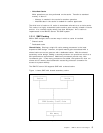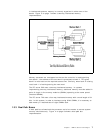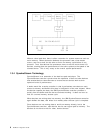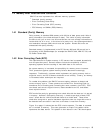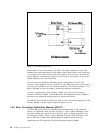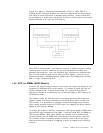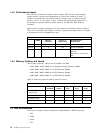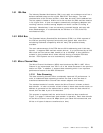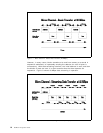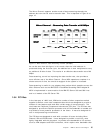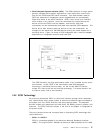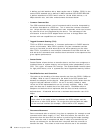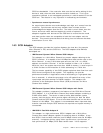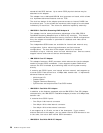1.5.1 ISA Bus
The Industry Standard Architecture (ISA) is not really an architecture at all but a
defacto standard based on the original IBM PC/AT bus design. The main
characteristics of the ISA bus include a 16-bit data bus and a 24-bit address bus.
The bus speed is limited to 8 MHz and it did not allow for DMA and bus masters
in its original form. It does not support automatically configuring adapters and
resolving resource conflicts among adapters nor does it allow for sharing of
interrupts. Nonetheless, it was an extremely successful design and even with
these disadvantages, it is estimated that the ISA bus is in 70% of the PCs
manufactured today.
1.5.2 EISA Bus
The Extended Industry Standard Bus Architecture (EISA) is a 32-bit superset of
the ISA bus providing improved functionality and greater data rates while
maintaining backward compatibility with the many ISA products already
available.
The main advancements of the EISA bus are 32-bit addressing and 16-bit data
transfer. It supports DMA and bus master devices. It is synchronized by an 8.33
MHz clock and can achieve data transfer of up to 33 MBps. A bus arbitration
scheme is also provided which allows efficient sharing of multiple EISA bus
devices. EISA systems can also automatically configure adapters.
1.5.3 Micro Channel Bus
The Micro Channel Architecture (MCA) was introduced by IBM in 1987. Micro
Channel is an improvement over ISA in all of the areas discussed in the previous
section on EISA. In addition, it supports data streaming which is an important
performance feature of the MCA architecture.
1.5.3.1 Data Streaming
The data streaming transfer offers considerably improved I/O performance. In
order to understand data streaming transfers we need to see how data is
transferred between Micro Channel bus master adapters and memory.
The standard method of transfer across the Micro Channel is known as basic
data transfer. In order to transfer a block of data in basic data transfer mode, an
address is generated on the address bus to specify where the data should be
stored; then the data is put on the data bus.
This process is repeated until the entire block of data has been transferred.
Figure 7 on page 14 shows basic data transfer in operation. Basic data transfer
on the Micro Channel runs at 20 MBps (each cycle takes 200 nanoseconds, and
32 bits or 4 bytes of data are transferred at a time).
Chapter 1. IBM PC Server Technologies 13



